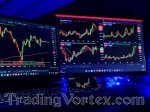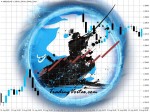Table Of Contents:
- Natural Gas Trading: Understanding the Basics:
Key Elements of Natural Gas Trading Basics:
Essential Tips for Successful Natural Gas Trading:
Advanced Trading Strategies for Natural Gas:
Mitigating Risks in Natural Gas Trading:
Preparation for Natural Gas Trading:
Monitoring and Staying Updated in Natural Gas Trading:
Conclusion: Mastering Natural Gas Trading.
Natural Gas Trading: Understanding the Basics:
Natural Gas Trading is a dynamic and profitable venture that offers traders an opportunity to participate in one of the world's most essential energy markets. This section, "Understanding the Basics," provides a solid foundation for those new to natural gas trading and serves as a refresher for seasoned traders, emphasizing the significance of mastering the essentials.
Exploring the Fundamentals of Natural Gas Trading:
What is Natural Gas Trading?
The Natural Gas Market Ecosystem:
The natural gas market involves various components, including producers, suppliers, consumers, traders, and speculators. Understanding the roles of these stakeholders is vital in comprehending the market dynamics.
Market Size and Significance:
Natural gas holds immense global importance as a clean energy source. Consequently, the natural gas market is substantial and provides ample opportunities for traders. Insights into market size and significance help traders gauge the potential for profit.
Importance of Mastering the Basics in Natural Gas Trading:
Risk Management and Decision-Making:
The basics of natural gas trading encompass risk management techniques. Traders must learn to mitigate potential losses by setting stop-loss orders, diversifying their portfolios, and understanding their risk tolerance.
Market Analysis:
Fundamental and technical analysis are fundamental to successful trading. Traders should grasp how to analyze supply and demand factors, market trends, and chart patterns. These analyses inform their trading decisions.
Trading Strategies and Styles:
It's crucial to be well-versed in various trading styles and strategies. Scalping, day trading, swing trading, and long-term investing are a few options. Each strategy suits different risk appetites and trading goals.
Leveraging Market Data:
Traders should know how to utilize market data sources, such as price charts, news releases, and economic indicators, to make informed decisions.
In summary, this section lays the foundation for natural gas trading by explaining the fundamentals of the market and highlighting the importance of mastering these basics. It introduces the concept of natural gas trading, the market ecosystem, its significance, and the vital skills required for successful trading, including risk management, market analysis, trading strategies, and leveraging market data.
Key Elements of Natural Gas Trading Basics:
In the world of natural gas trading, grasping the fundamental components and dynamics is imperative. This section delves deeper into the key elements of natural gas trading basics, allowing traders to develop a comprehensive understanding of the market.
Understanding Supply and Demand Dynamics in Natural Gas Trading:
Supply Factors:
Natural gas supply is influenced by various factors, including production levels, exploration and drilling activities, and natural gas reserves. The accessibility of new reserves, as well as geopolitical events that impact production regions, can significantly affect supply.
Demand Drivers:
Natural gas demand is driven by various sectors, such as residential, commercial, industrial, and power generation. Weather conditions, economic growth, energy policies, and technological advancements play roles in shaping demand dynamics.
Seasonal Variations:
Seasonal patterns in natural gas demand are noticeable. For example, "demand tends to be higher during winter for heating and lower during the summer". Traders must understand and anticipate these fluctuations.
Differentiating Types of Natural Gas Products:
Spot and Futures Contracts:
Traders have the option to trade natural gas through spot and futures contracts. Spot contracts involve the immediate exchange of natural gas, while futures contracts are agreements to buy or sell natural gas at a predetermined future date and price.
Natural Gas Derivatives:
Beyond spot and futures contracts, natural gas derivatives like options and swaps offer alternative ways to gain exposure to the market. These financial instruments can be used for risk management and speculative purposes.
Analyzing Factors Influencing Natural Gas Prices:
Market Fundamentals:
Market fundamentals encompass supply and demand dynamics, inventory levels, production trends, and consumption patterns. Traders need to stay informed about these factors as they have a direct impact on price movements.
Weather and Seasonal Trends:
Weather conditions significantly affect natural gas demand, especially in regions where it's used for heating and cooling. Traders should be mindful of weather forecasts and seasonal trends, which can lead to short-term price volatility.
Geopolitical Events:
Geopolitical events, such as conflicts in major natural gas-producing regions, can disrupt supply chains and influence prices. Keeping an eye on global political developments is essential for traders.
Economic Factors:
Economic indicators, like GDP growth, industrial output, and employment figures, can affect natural gas prices. A robust economy generally correlates with increased demand for natural gas.
This section delves into the key elements of natural gas trading basics, emphasizing the importance of understanding supply and demand dynamics, differentiating between types of natural gas products, and analyzing the multifaceted factors that influence natural gas prices. By comprehending these elements, traders can make more informed decisions in the market.
Essential Tips for Successful Natural Gas Trading:
In the high-stakes world of natural gas trading, success is often predicated on a combination of knowledge, discipline, and strategic acumen. This section provides essential tips and guidance to help traders navigate the intricacies of the market and enhance their chances of success.
Implementing Effective Risk Management Strategies:
Setting Stop-Loss Orders:
Protecting your investment is paramount. Implementing stop-loss orders helps limit potential losses by automatically selling a position when it reaches a predetermined price. It's a key tool in managing risk.
Diversification:
Don't put all your eggs in one basket. Diversify your natural gas portfolio to spread risk. This can involve trading different natural gas products or even diversifying into other commodities or asset classes.
Understanding Risk Tolerance:
Every trader has a different risk tolerance. It's crucial to assess your own risk tolerance and develop a trading strategy that aligns with it. This helps prevent making impulsive decisions during market fluctuations.
Conducting Comprehensive Market Analysis and Research:
Fundamental Analysis:
Analyze supply and demand factors, geopolitical events, economic indicators, and weather patterns. Understanding the fundamental drivers of natural gas prices is essential for making informed trading decisions.
Technical Analysis:
Utilize technical tools and chart patterns to identify trends, support, and resistance levels. Technical analysis helps in pinpointing potential entry and exit points.
Staying Informed:
Continuous learning is vital. Stay informed about market news and events that could impact natural gas prices. Subscribe to industry publications, monitor relevant news outlets, and participate in relevant forums.
Timing and Entry Points: Practical Tips for Novice Traders.
Practice with Simulated Accounts:
For novice traders, it's beneficial to practice trading strategies with simulated accounts before committing real capital. This helps build confidence and refine trading skills.
Start Small:
Begin with a small investment and gradually scale up as you gain experience and confidence. This approach allows you to learn without risking significant capital.
Identify Entry and Exit Points:
Develop a clear strategy for entry and exit points. Consider using technical indicators or fundamental factors to guide your decisions.
Navigating Regulatory Considerations in Natural Gas Trading:
Know the Regulations:
Understand the regulatory environment governing natural gas trading in your region. Regulations can vary significantly, and compliance is essential to avoid legal issues.
Choose a Reliable Broker:
Select a reputable broker with a strong regulatory track record. Ensure the broker adheres to industry standards and provides a secure trading platform.
Tax Implications:
Be aware of tax implications related to your trading activities. Consult with a tax professional to ensure you're in compliance with tax laws.
By adhering to these essential tips, traders can better manage risk, conduct thorough market analysis, make well-timed decisions, and navigate the regulatory landscape. These strategies collectively contribute to the potential for successful natural gas trading.
Advanced Trading Strategies for Natural Gas:
As traders become more experienced and confident in the natural gas market, they often seek advanced trading strategies to maximize their gains and manage risk effectively. This section explores several advanced trading strategies tailored for natural gas, along with real-life case studies illustrating their successful application.
Utilizing Swing Trading for Short-Term Gains in Natural Gas:
Defining Swing Trading:
Swing trading is a short- to medium-term strategy that capitalizes on price swings or fluctuations within the natural gas market. This strategy aims to capture profits over days or weeks, rather than months or years.
Identifying Swing Points:
Successful swing traders focus on recognizing key swing points, including support and resistance levels. These levels can serve as entry and exit points for their trades.
Risk Management in Swing Trading:
Managing risk is crucial in swing trading. Traders often use stop-loss orders to limit potential losses, and they carefully manage their position sizes to avoid overexposure.
Long-Term Investment Strategies for Natural Gas Trading:
Buy and Hold Strategy:
Long-term investors in natural gas may employ a buy and hold strategy. They purchase natural gas contracts or stocks and maintain their positions for extended periods, betting on the long-term growth of the industry.
Investing in Natural Gas Stocks:
Investors can also consider investing in natural gas-related stocks. Careful research and analysis of these stocks is essential for making informed investment decisions.
Leveraging Options and Derivatives: Advanced Strategies.
Options Trading:
Options offer traders the right, but not the obligation, to buy or sell natural gas at a predetermined price. Options strategies can be used for risk management, hedging, or speculative purposes.
Futures Spreads:
Traders can engage in futures spreads by simultaneously buying and selling natural gas futures contracts of different expiration dates. This strategy can help mitigate risk and take advantage of price differentials.
Real-Life Case Studies Illustrating Successful Trading Strategies:
In this sub-section, we will delve into specific examples of successful traders who have achieved remarkable results in the natural gas trading arena. These case studies offer valuable insights into the strategies and approaches that have propelled these traders to success.
John Smith: The Swing Trading Maestro.
John Smith is a seasoned trader with a remarkable talent for swing trading in the natural gas market. His method revolves around identifying short-term price movements, which has consistently led to substantial gains. John employs a strategy that focuses on recognizing key swing points, allowing him to enter and exit positions strategically. He places great emphasis on risk management, utilizing stop-loss orders to limit potential losses and carefully managing position sizes to avoid overexposure.
Sarah Turner: Long-Term Investment Pioneer.
Sarah Turner is a well-known figure in the world of long-term natural gas investment. Her approach involves patient analysis of market trends and a steadfast commitment to a buy-and-hold strategy. Over the years, her unwavering dedication has resulted in substantial returns. Sarah's investment philosophy emphasizes careful research and a deep understanding of market fundamentals. She remains dedicated to her long-term positions, betting on the industry's sustained growth.
David Martinez: Mastering Options and Derivatives.
David Martinez is an experienced trader who has achieved success by skillfully utilizing options and derivatives in his natural gas trading portfolio. He's become proficient in these advanced financial instruments for both risk management and profit generation. David's strategies involve the strategic use of options to hedge positions and enhance returns. His outcomes validate the efficacy of options and derivatives in navigating the natural gas market with a more complex and versatile approach.
This section delves into advanced trading strategies for natural gas, providing insights into swing trading, long-term investment strategies, and the use of options and derivatives. Real-life case studies serve as practical illustrations of successful trading strategies, offering valuable lessons for traders looking to elevate their game in the natural gas market.
Mitigating Risks in Natural Gas Trading:
Effective risk management is paramount in natural gas trading to safeguard investments and ensure long-term success. This section delves into the various aspects of risk mitigation in the natural gas market, offering strategies to assess, manage, and avoid common pitfalls.
Assessing Risks Involved in Natural Gas Trading:
Market Risk:
Market risk in natural gas trading pertains to the potential for financial losses due to adverse price movements. Traders must assess the market's historical volatility and anticipate potential risks associated with supply and demand dynamics.
Credit Risk:
Credit risk arises when counterparties fail to fulfill their obligations in a trade. It's essential to evaluate the creditworthiness of parties involved, such as brokers or counterparties in over-the-counter (OTC) transactions.
Regulatory Risk:
Regulations and policies can change, impacting trading strategies and profitability. Staying informed about regulatory developments and potential changes is crucial to managing regulatory risk.
Implementing Robust Risk Management Strategies:
Position Sizing:
Determine the appropriate size for your positions in relation to your overall capital. This approach helps mitigate potential losses and avoids overexposure to market fluctuations.
Stop-Loss Orders:
Deploying stop-loss orders is a practical way to limit potential losses. Setting stop-loss points at predetermined price levels ensures positions are automatically closed when reaching that threshold.
Diversification:
Diversifying your portfolio by trading various natural gas products or even spreading investments across different commodities helps mitigate risk by reducing dependence on a single asset.
Averting Common Pitfalls in Natural Gas Trading:
Overtrading:
Overtrading, often fueled by impulsive decisions, can lead to substantial losses. Traders should follow well-defined strategies, avoid emotional reactions, and stick to their risk management plans.
Neglecting Fundamental Analysis:
Ignoring the fundamentals of supply and demand dynamics can expose traders to unforeseen risks. Adequate research and market analysis are fundamental to making informed trading decisions.
Lack of Risk Tolerance Assessment:
Not assessing personal risk tolerance can lead to unsuitable trading strategies. It's crucial to understand your capacity for risk and align your trading style with your risk tolerance.
By assessing risks, implementing robust risk management strategies, and avoiding common pitfalls, traders can navigate the natural gas market with a greater degree of safety and confidence. Mitigating risks is essential to protect investments and improve the overall probability of success in natural gas trading.
Preparation for Natural Gas Trading:
Before delving into the world of natural gas trading, it's essential to prepare meticulously. This section outlines the necessary steps and considerations for prospective traders, including setting up a trading account, selecting an optimal trading platform, and understanding the use of technical analysis tools.
Setting up a Trading Account: Practical Steps and Considerations:
Choosing the Right Broker:
Selecting a reputable and well-regulated broker is the first critical step. Consider factors such as fees, available natural gas products, research tools, and the broker's track record.
Account Types:
Brokers offer various account types, including standard, mini, and micro accounts. Assess your risk tolerance, trading capital, and experience level to determine the most suitable account type.
Documentation and Verification:
Brokers require specific documentation for identity verification and compliance with regulations. Ensure you have all the necessary paperwork ready to expedite the account opening process.
Selecting an Optimal Natural Gas Trading Platform:
Web-Based vs. Desktop Trading Platforms:
Evaluate whether you prefer a web-based platform, which offers flexibility and accessibility, or a desktop platform, known for advanced features and robust charting tools. Some brokers provide both options.
Platform Features:
Assess the features of the trading platform. Look for real-time data, customizable charts, technical indicators, and order execution speed. A user-friendly interface is also important for seamless trading.
Mobile Trading Apps:
For traders on the go, mobile trading apps are invaluable. These apps provide the flexibility to trade and monitor positions from smartphones and tablets.
Understanding and Leveraging Technical Analysis Tools:
Candlestick Patterns:
Candlestick patterns provide insights into price movements. Learn to recognize and interpret these patterns to make informed trading decisions.
Indicators and Oscillators:
Technical indicators and oscillators, such as Moving Averages, Relative Strength Index (RSI), and MACD, help identify trends and potential entry and exit points. Familiarize yourself with these tools.
Support and Resistance Levels:
Support and resistance levels play a crucial role in technical analysis. These levels indicate potential turning points in the market, and understanding how to utilize them can be advantageous.
By thoroughly preparing for natural gas trading through these steps, traders can lay a solid foundation for their trading journey. Selecting the right broker and trading platform, along with mastering technical analysis tools, can enhance the prospects of success and minimize potential hurdles along the way.
Monitoring and Staying Updated in Natural Gas Trading:
In the ever-evolving landscape of natural gas trading, staying well-informed and adaptable is pivotal to success. This section highlights the importance of monitoring the market in real time, staying updated with the latest news and events, and adjusting strategies to align with dynamic market trends.
Real-Time Monitoring Tools for Natural Gas Markets:
Price Charts and Graphs:
Price charts and graphs provide real-time and historical data on natural gas prices. These visual tools help traders identify trends, patterns, and potential entry or exit points.
Market Order Book:
The order book displays current buy and sell orders for natural gas contracts. Traders can assess market depth and liquidity, enabling them to make well-informed decisions.
Technical Analysis Software:
Technical analysis software offers a suite of tools and indicators for analyzing price movements, patterns, and momentum. Utilizing these tools can help traders make data-driven decisions.
Staying Abreast of the Latest Market News and Events:
Industry News Outlets:
Regularly follow industry news outlets that cover natural gas markets. These sources provide insights into market developments, policy changes, and global events that can impact prices.
Government Publications:
Government publications, such as energy reports and policy announcements, can be valuable sources of information. They offer data on production, consumption, and regulatory changes that influence the natural gas market.
Economic Indicators:
Stay updated on economic indicators, including GDP growth, industrial output, and employment figures. Economic data can provide context for understanding demand and market trends.
Adapting Strategies to Align with Dynamic Market Trends:
Recognizing Changing Market Conditions:
Being able to recognize changing market conditions is essential. Traders must adapt to shifts in supply and demand, economic factors, and geopolitical events that affect natural gas prices.
Reviewing and Adjusting Trading Plans:
Periodically review and adjust trading plans based on evolving market trends. Strategies should be flexible and responsive to new information and conditions.
Backtesting and Learning:
Backtesting past trading strategies and learning from both successes and failures is a valuable practice. It can lead to refinements in trading approaches and the ability to adapt to dynamic market trends.
By integrating real-time monitoring tools, staying informed through the latest market news and events, and adapting strategies to align with dynamic market trends, traders can enhance their decision-making capabilities and respond effectively to the ever-changing natural gas trading environment.
Conclusion: Mastering Natural Gas Trading.
In the vast realm of commodities trading, mastering the nuances of natural gas trading is both a challenging endeavor and a potentially rewarding pursuit. Throughout this comprehensive guide, we've navigated the basics, tips, and strategies that can empower traders to succeed in the natural gas market. As we conclude, let's recap the key aspects of natural gas trading and provide some encouragement and tips for those aspiring to venture into this dynamic field.
Recapitulation of Key Aspects in Natural Gas Trading:
- Understanding the Fundamentals: We've explored the fundamentals of natural gas trading, delving into supply and demand dynamics, the different types of natural gas products, and the multifaceted factors influencing natural gas prices.
- Risk Management: Effective risk management strategies are crucial in natural gas trading. Setting stop-loss orders, diversifying portfolios, and understanding personal risk tolerance are paramount.
- Comprehensive Market Analysis: The ability to conduct both fundamental and technical analysis is a cornerstone of successful trading. Market analysis equips traders with the insights they need to make informed decisions.
- Diverse Trading Strategies: We've covered a spectrum of trading strategies, from swing trading and long-term investments to the use of options and derivatives. Tailoring strategies to individual goals and risk appetites is essential.
- Real-Life Case Studies: Real-life examples of successful traders have demonstrated the practical application of these strategies in the natural gas market.
- Mitigating Risks: A thorough discussion of risk assessment, robust risk management strategies, and common pitfalls to avoid has highlighted the significance of risk mitigation in trading.
- Preparation and Adaptation: Preparing for trading involves setting up an account, selecting a trading platform, and understanding the use of technical analysis tools. Adaptation to changing market conditions is equally important to stay ahead.
- Monitoring and Staying Updated: We've emphasized the importance of real-time monitoring, staying informed with the latest news and events, and adapting strategies to align with dynamic market trends.
Encouragement and Tips for Aspiring Natural Gas Traders:
Embarking on a journey into natural gas trading is a bold and exciting endeavor. As you take your first steps or continue your trading journey, here are some words of encouragement and essential tips:
- Continuous Learning: Never stop learning. The world of trading is ever-evolving, and staying informed is vital to success.
- Discipline and Patience: Discipline is the cornerstone of trading, and patience is its best companion. Develop a clear plan and stick to it, even in the face of adversity.
- Risk Management: Always prioritize risk management. Protecting your capital should be your foremost concern.
- Diversify and Adapt: Diversify your trading portfolio and be adaptable. No single strategy works in all market conditions.
- Seek Mentorship: Consider seeking guidance from experienced traders or mentors who can provide valuable insights and perspectives.
- Embrace the Journey: Trading is a journey of self-discovery and skill development. Embrace the challenges and successes along the way.
With these principles in mind, you can confidently navigate the natural gas market, armed with knowledge, strategies, and a passion for trading. The world of natural gas trading is rich with opportunities, and by mastering the art, you can unlock its potential and achieve your trading goals. Happy trading!









































 TradingVortex.com® 2019 © All Rights Reserved.
TradingVortex.com® 2019 © All Rights Reserved.